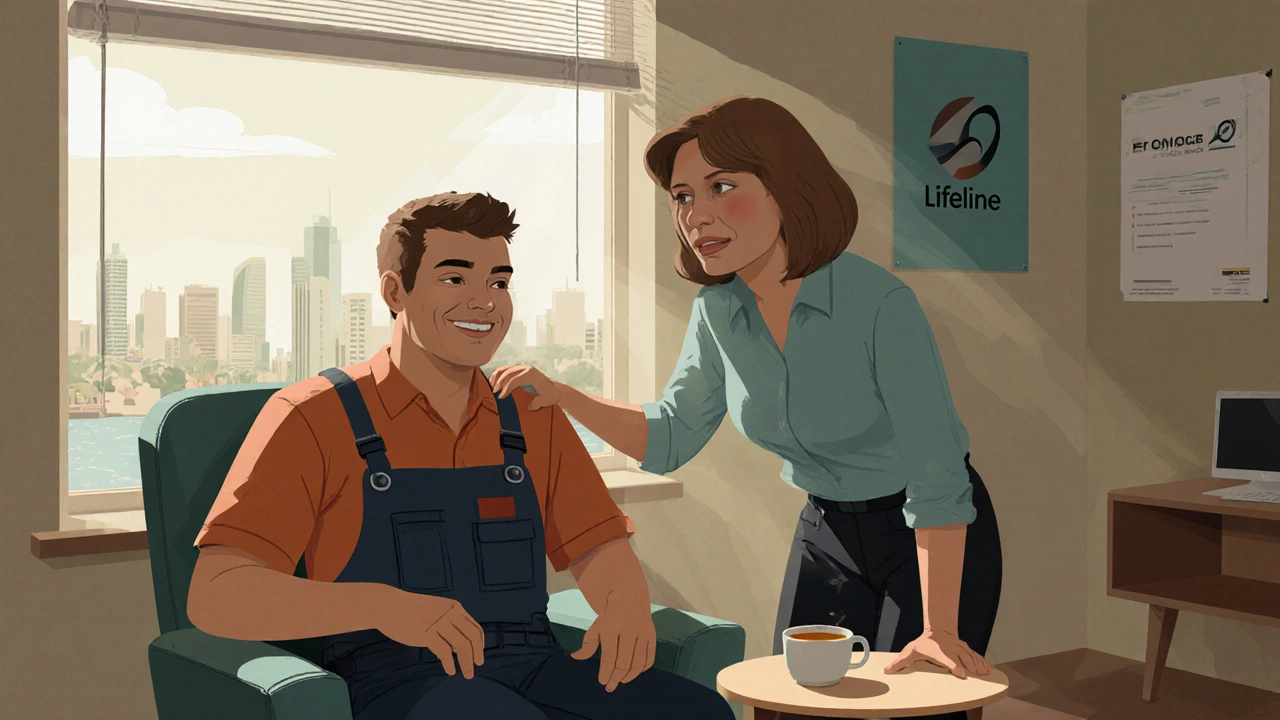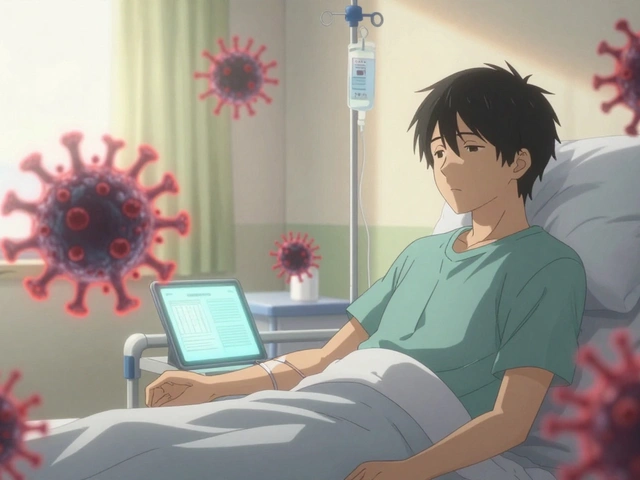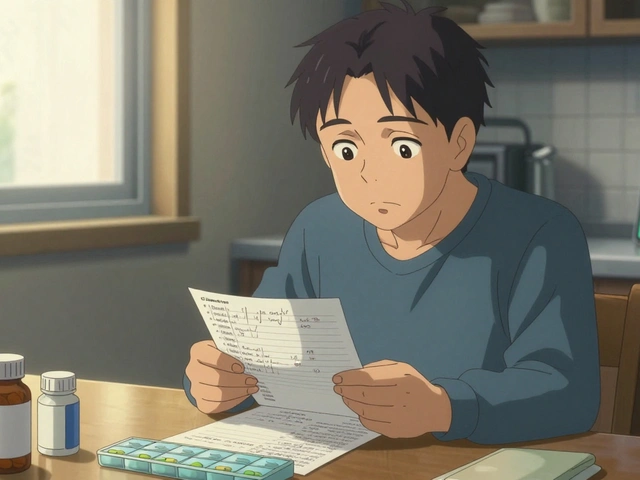Depression Stigma Awareness Quiz
Question 1: What is a common misconception about depression?
Question 2: Which factor contributes to depression stigma?
Question 3: How can you help reduce depression stigma?
Key Facts About Depression
- 1Over 280 million people worldwide experience depression
- 2Depression involves chemical imbalances, genetics, and life stressors
- 3Cognitive Behavioral Therapy helps 60-70% of patients
- 4Depression is a medical condition, not a character flaw
- 5Help-seeking rates lag behind increased cases post-pandemic
Did You Know? In Australia, Lifeline (13 11 14) offers 24/7 crisis support and Beyond Blue (1300 22 4636) provides counseling and self-help tools.
Your Results
Key Takeaways
- Stigma keeps many people from seeking help for depression.
- Common myths-like "depression is just sadness"-are false and harmful.
- Education, open conversation, and visible role models can dismantle the silence.
- Practical steps include language tips, supportive listening, and linking to professional resources.
- Australia offers free crisis lines, low‑cost therapy options, and community support groups.
What is the Stigma Around Depression?
When people hear the word Depression is a common mental health condition characterized by persistent low mood, loss of interest, and physical symptoms that impair daily life, they often picture a sad person who simply needs to "cheer up." That shortcut ignores the complex biology, social pressures, and personal history that shape the disorder. The result is a kind of social pressure-Stigma is the set of negative attitudes and beliefs that lead to discrimination, shame, and silence for people with a particular condition-that makes anyone dealing with depression think twice before asking for help.
Why Does Stigma Persist?
Three forces keep the silence alive:
- Historical misconceptions. For decades, mental illness was blamed on moral weakness. Even classic textbooks labeled it "neurosis" or "hysteria," casting sufferers as flawed.
- Media portrayals. Movies and news often show people with depression as dangerous or incapable, reinforcing fear.
- Lack of personal experience. Most people have never lived through a major depressive episode, so they rely on anecdotes and stereotypes.
The World Health Organization is a United Nations agency that monitors global health trends and provides policy guidance estimates that over 280 million people worldwide experience depression, yet many remain hidden because of depression stigma. In Australia, the Australian Government is the federal authority that funds mental health services and runs national awareness campaigns reports a 12% rise in anxiety and depression cases after the pandemic, while help‑seeking rates lag behind.

Real Stories: Breaking the Silence
Consider Sam, a 32‑year‑old electrician from Sydney. He told his boss he was feeling "down" and was escorted to a brief mental‑health training session. Sam’s boss shared his own battle with depression, and the shop installed a quiet room for staff to decompress. Sam later sought help through Lifeline is Australia’s national suicide prevention and crisis helpline, reachable 24/7 at 131114. Within weeks, Sam felt less isolated and started attending a weekly Support Group is a peer‑led gathering where people share experiences and coping strategies in a safe environment for people with mood disorders.
Stories like Sam’s show that when the silence is broken, community attitudes shift. A single open conversation can ripple into policy changes, workplace training, and more people feeling safe to say "I need help."
How to Challenge Depression Stigma: Actionable Steps
Everyone can play a part. Here are practical ways to turn compassion into action:
- Mind your language. Use "person first" phrasing: say "someone living with depression" instead of "depressed person." Avoid phrases like "snap out of it" or "just get over it."
- Share accurate information. Highlight that depression involves chemical imbalances, genetics, and life stressors. The Cognitive Behavioral Therapy is a structured, evidence‑based psychotherapy that helps modify negative thought patterns and behaviors works for 60‑70% of patients in clinical trials.
- Listen without judgment. Offer a simple, "I'm here for you. Do you want to talk?" rather than trying to solve the problem immediately.
- Encourage professional help. Suggest a visit to a Psychiatrist is a medical doctor specialized in diagnosing and treating mental illnesses, often prescribing medication or a qualified therapist. Emphasize that seeking help is a sign of strength.
- Promote visible role models. Share stories of public figures who have spoken about their depression. Seeing leaders be vulnerable reduces the sense of "being alone."
- Support community initiatives. Volunteer with local mental‑health charities, donate to research, or help organize workplace mental‑health days.
Myths vs. Facts: A Quick Reference
| Myth | Fact |
|---|---|
| Depression is just sadness. | Depression includes persistent low mood, loss of interest, sleep and appetite changes, and sometimes physical pain. |
| People with depression are weak. | Research shows genetics, brain chemistry, and trauma all contribute; it’s a medical condition, not a character flaw. |
| Talking about depression makes it worse. | Open dialogue reduces isolation and encourages treatment, leading to better outcomes. |
| Only therapy can help. | Medication, lifestyle changes, peer support, and psychotherapy each play valuable roles. |
| Most people recover on their own. | While some mild cases improve, untreated moderate to severe depression often leads to chronic issues. |

Resources and Support in Australia
If you or someone you know is struggling, these services are ready to help:
- Lifeline (131114): 24/7 crisis support, free and confidential.
- Beyond Blue (1300224636): Provides counseling, online forums, and self‑help tools.
- Headspace: Youth mental‑health services for ages 12‑25, offering therapy and peer support.
- My Aged Care Mental Health Resources: Tailored support for older adults.
- Local Community Health Centres: Many run free or low‑cost CBT groups and workshops.
Remember, reaching out is a sign of courage, not failure. The first step is the hardest, but each subsequent step builds momentum toward recovery.
Moving Forward: A Collective Commitment
Breaking the silence isn’t a one‑off act; it’s a lifelong agreement to treat mental health with the same respect we give physical health. Schools can embed mental‑health curricula, employers can offer flexible leave, and media outlets can showcase balanced stories. When we all commit to listening, learning, and speaking up, the weight of depression stigma lightens for everyone.
Frequently Asked Questions
What exactly is depression?
Depression is a medical condition marked by persistent low mood, loss of interest in activities, changes in sleep or appetite, and difficulty concentrating. It can affect anyone, regardless of age, gender, or background.
Why do people feel ashamed about having depression?
Stigma creates a fear of judgment, job loss, or being labeled “weak.” Cultural myths and media stereotypes reinforce the idea that mental illness is a personal failing, not a treatable condition.
How can I support a friend who might be depressed?
Start by listening without trying to fix anything. Use "I" statements, such as “I’m worried about you,” and encourage professional help. Offer to accompany them to a doctor or therapist if they’re comfortable.
Is medication necessary for treating depression?
Medication can be vital for moderate to severe cases, especially when brain chemistry plays a big role. Many people combine medication with therapy for the best outcome.
Where can I find affordable therapy in Sydney?
Community health centres, university psychology clinics, and services like Beyond Blue offer low‑cost or sliding‑scale options. Check the NSW Health website for publicly funded mental‑health programs.





In contemporary discourse the examination of depression stigma assumes a significance that surpasses mere academic curiosity. Scholars often neglect the practical ramifications that pervade everyday interactions. The prevailing narrative tends to elevate theoretical constructs while disregarding lived experience. A rigorous exploration must therefore consider the sociocultural matrices that sustain prejudice. Historical antecedents reveal a lineage of moralistic condemnation. Literary depictions have entrenched caricatures that persist in modern media. Institutional policies frequently echo antiquated assumptions. Healthcare frameworks occasionally mirror these biases through diagnostic hesitancy. Personal testimonies illuminate the profound isolation induced by silence. The cumulative effect of these forces manifests as a barrier to treatment. Empirical studies demonstrate a correlation between stigma and reduced help‑seeking behavior. Intervention strategies require a multifaceted approach encompassing education, language reform, and community engagement. Moreover the role of media in reshaping perceptions cannot be overstated. When public figures disclose vulnerability the ripple effect can dismantle entrenched myths. Ultimately a collective commitment to compassionate dialogue will erode the foundations of stigma.
It is incumbent upon us to acknowledge the pernicious impact of stigmatizing language on vulnerable populations. Such discourse not only marginalizes but also contravenes ethical obligations to promote public welfare. The moral failings inherent in perpetuating these myths demand immediate rectification.
The data presented oversimplifies complex neurobiological processes. A more nuanced perspective is required.
One might argue that the focus on stigma detracts from the urgent need for pharmacological innovation. Yet to ignore the sociocultural dimension is to embrace a reductive worldview. The discourse thus oscillates between biology and sociology without achieving synthesis. In this tension lies an opportunity for interdisciplinary dialogue.
Depression is not merely a fleeting mood but a persistent alteration of one's inner landscape. Recognizing this reality invites compassion rather than judgment. Simple language shifts can alleviate the pressure on those suffering. When we listen without demanding explanations, we honor their experience. Such humility fosters genuine connection.
Absolutely, your points resonate deeply 😊. Embracing simple, person‑first language can transform how we relate to one another. It's encouraging to see these ideas shared so thoughtfully.
The philosophical underpinnings of stigma merit careful contemplation. Yet practical action remains paramount.
From a systems engineering standpoint the current framework exhibits suboptimal throughput and redundant feedback loops.
Whilst the argument is compelling, several grammatical inconsistencies undermine its credibility. For instance the misuse of “its” versus “it’s” should be corrected. Moreover the sentence structure would benefit from more precise punctuation.
Stigma persists because society refuses to confront uncomfortable truths.
Great observation! Raising awareness in educational settings can indeed shift perceptions over time. Engaging workshops and peer discussions are effective tools for fostering empathy.
The prevalence of depression, affecting millions worldwide, underscores the urgent need for comprehensive education, thoughtful language, and accessible resources, all of which work synergistically to reduce stigma.
Its clear that many still think mental illness is a weaakness, despite the evidence. Such attitudes are simply outdated.
We must challenge those misconceptions with empathy and factual clarity, encouraging open dialogue that respects each individual's journey.